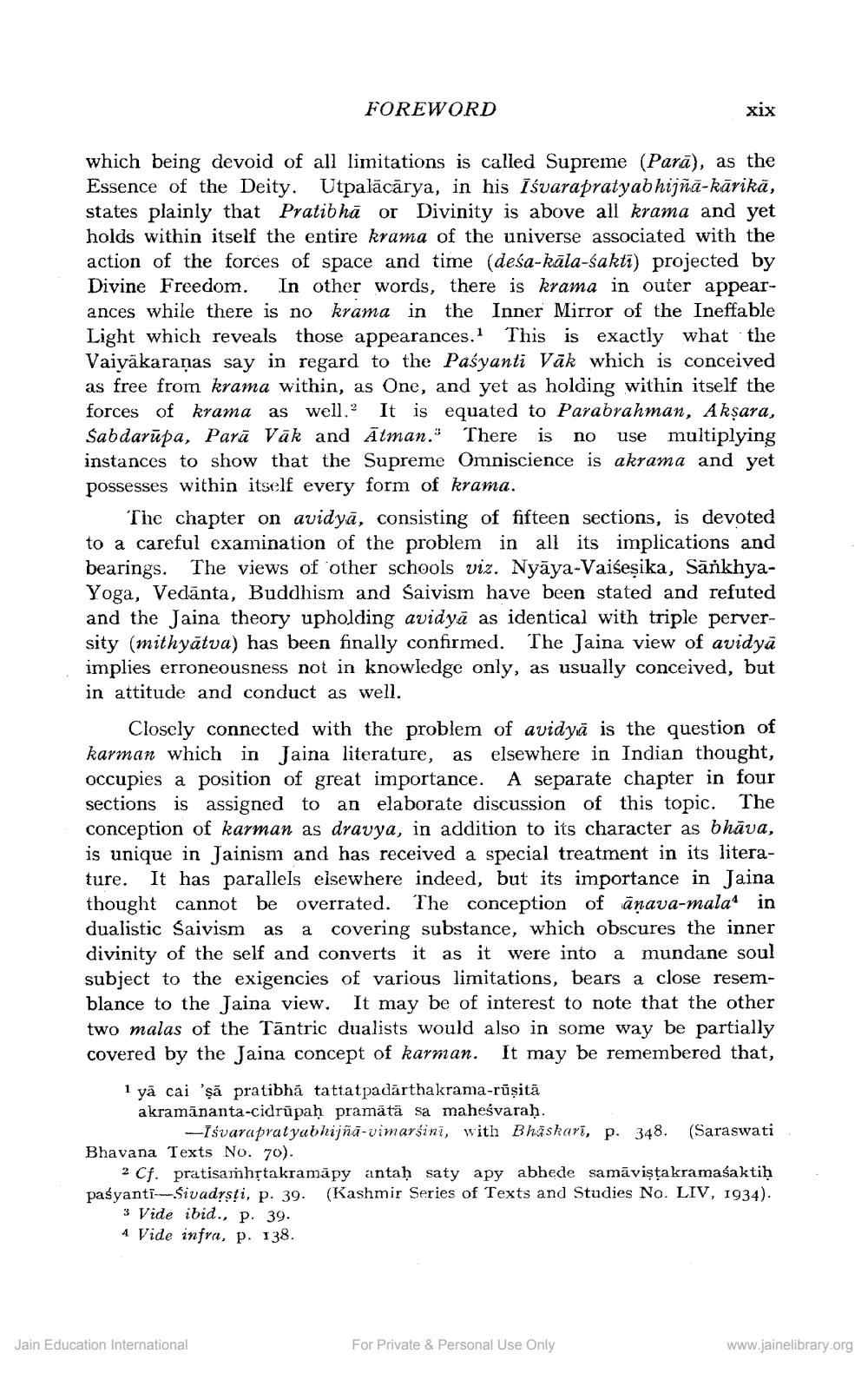________________
FOREWORD
xix
which being devoid of all limitations is called Supreme (Parā), as the
of the Deity. Utpalācārya, in his īśvarapratyabhijñā-kārikā, states plainly that Pratibhā or Divinity is above all krama and yet holds within itself the entire krama of the universe associated with the action of the forces of space and time (deśa-kāla-sakti) projected by Divine Freedom. In other words, there is krama in outer appearances while there is no krama in the Inner Mirror of the Ineffable Light which reveals those appearances. This is exactly what the Vaiyakaranas say in regard to the Paśyanti Vāk which is conceived as free from krama within, as One, and yet as holding within itself the forces of krama as well. It is equated to Parabrahman, Akşara, Sabdarūpa, Parā Vāk and Ātman." There is no use multiplying instances to show that the Supreme Omniscience is akrama and yet possesses within itself every form of krama.
The chapter on avidyā, consisting of fifteen sections, is devoted to a careful examination of the problem in all its implications and bearings. The views of other schools viz. Nyāya-Vaiseşika, SankhyaYoga, Vedānta, Buddhism and saivism have been stated and refuted and the Jaina theory upholding avidyā as identical with triple perversity (mithyātva) has been finally confirmed. The Jaina view of avidyā implies erroneousness not in knowledge only, as usually conceived, but in attitude and conduct as well.
Closely connected with the problem of avidyā is the question of karman which in Jaina literature, as elsewhere in Indian thought, occupies a position of great importance. A separate chapter in four sections is assigned to an elaborate discussion of this topic. The conception of karman as dravya, in addition to its character as bhāva, is unique in Jainism and has received a special treatment in its literature. It has parallels elsewhere indeed, but its importance in Jaina thought cannot be overrated. The conception of anava-mala* in dualistic Saivism as a covering substance, which obscures the inner divinity of the self and converts it as it were into a mundane soul subject to the exigencies of various limitations, bears a close resemblance to the Jaina view. It may be of interest to note that the other two malas of the Tantric dualists would also in some way be partially covered by the Jaina concept of karman. It may be remembered that,
1 yä сai 'şã pratibhā tattatpadārtha krama-rūşitā akramānanta-cidrāpaḥ pramätā sa maheśvaraḥ.
--Isvarapratyabhijñā-vimarsini, with Bhaskari, p. 348. (Saraswati Bhavana Texts No. 70).
2 Cf. pratisamhstakramāpy antaḥ saty apy abhede samāvişta kramasaktih paśyanti---Sivadysti, p. 39. (Kashmir Series of Texts and Studies No. LIV, 1934).
3 Vide ibid., p. 39. 4 Vide infra, p. 138.
Jain Education International
For Private & Personal Use Only
www.jainelibrary.org




